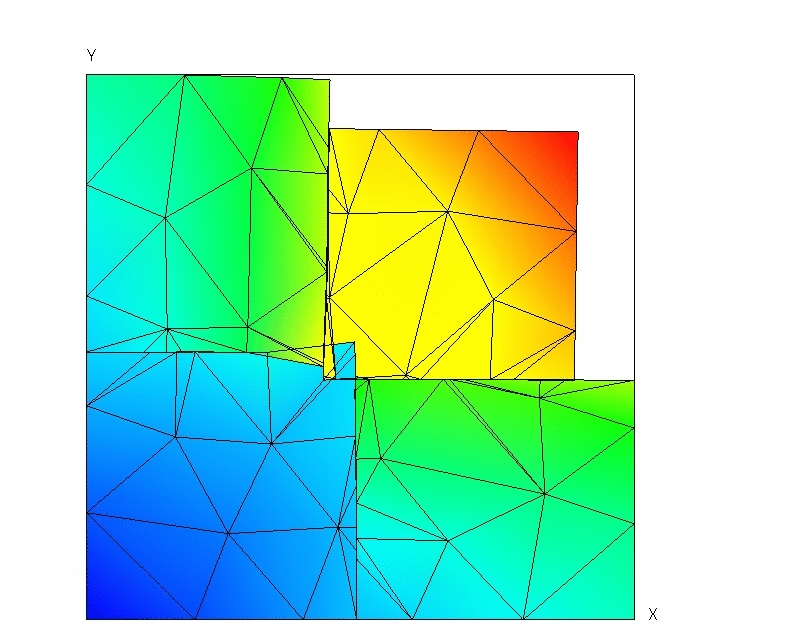8. F modeling#
8.1. Characteristics of modeling#
It is the same modeling as modeling E, but with plane constraints. The intersection is constructed in the same way.
8.2. Characteristics of the mesh#
The mesh, identical to that of modeling B, is represented in FIG. 4.2-a.
8.3. Tested sizes and results#
The movements at the level of the crack lips are tested after having carried out the post-treatment operations relating to \(\text{X-FEM}\) (POST_MAIL_XFEM and POST_CHAM_XFEM). The DX displacement should follow function \({u}_{x}\) in equation 2.2-7. The displacement DY should follow function \({u}_{y}\) in equation 2.2-8. The deformation shown in FIG. 7.4-a is obtained.
Identification |
Reference |
0 |
|
DEPZON_1 |
DX- \({u}_{x}\) |
MIN |
|
MAX |
0 |
||
DY- \({u}_{y}\) |
MIN |
0 |
|
MAX |
0 |
||
DEPZON_2 |
DX- \({u}_{x}\) |
MIN |
0 |
MAX |
0 |
||
DY- \({u}_{y}\) |
MIN |
0 |
|
MAX |
0 |
||
DEPZON_3 |
DX- \({u}_{x}\) |
MIN |
0 |
MAX |
0 |
||
DY- \({u}_{y}\) |
MIN |
0 |
|
MAX |
0 |
||
DEPZON_4 |
DX- \({u}_{x}\) |
MIN |
0 |
MAX |
0 |
||
DY- \({u}_{y}\) |
MIN |
0 |
|
MAX |
0 |
||
Table 8.3-1
The deformation is shown in Figure 8.4-a.

Figure 8.4-a: Deformed structure (Exaggeration 10).
We test the value of \({E}^{e}\) produced by the POST_ERREUR operator (expressed in \(\text{J}\times {\text{m}}^{-1}\)).
Identification |
Reference type |
Reference value |
Ee |
“ANALYTIQUE” |
1,825106 |
We test the value of \({\Vert u\Vert }_{{L}^{2}}\) produced by the POST_ERREUR operator.
8.4. notes#
The remarks are identical to those formulated for modeling E.